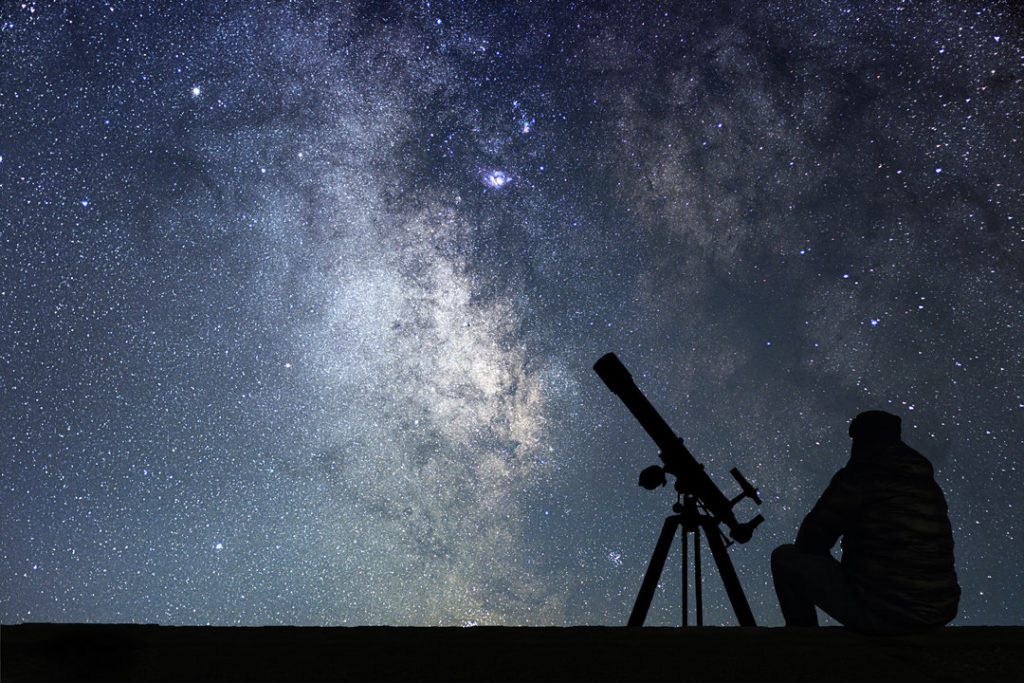While 2020 lacked the drama of something like the shadow of a solar eclipse sliding across huge swaths of North America, it did give us some spectacular night-sky viewing.
On April 4 the planet Venus came into an unusually strong conjunction with the Pleiades star cluster, which is commonly known as the Seven Sisters. Venus and Alcyone, one of the Pleiades stars, will be less than 5 degrees apart.
About 2 weeks later, on April 15, the Moon aligned with Mars, Saturn and Jupiter. The 3 planets appeared in a line extending up at about a 30-degree angle in the southeast night sky, from Mars low in the sky right and up to Saturn and then right and to Jupiter. The Moon approached from the right and at 5 a.m. it lined up under Saturn.
After 2 previous comets failed to produce the hoped-for sky-shows earlier in the year, Comet Neowise on July 23 made its closest pass to Earth, about 64 million miles away. It’s not expected back in our part of the solar system until the year 8786.
The Full Corn Moon shone the night of Sept. 1 into the morning of Sept. 2, setting the stage for a Harvest Moon on Oct. 1 and then a Blue Moon on Halloween, Oct. 31.
“A Blue Moon is a fairly infrequent phenomenon involving the appearance of an additional full moon within a given period,” according to Space.com. “But which period? It turns out there are two definitions of the term, and one was borne out of a misunderstanding of the other. The older meaning defines a Blue Moon as the third full moon in a season that has four full moons.
Called a seasonal Blue Moon, this occurs about every 2.5 years. More recently, the term Blue Moon has been applied to the second full moon within a single calendar month. There are roughly 29.5 days between full moons, making it unusual for two full moons to fit into a 30- or 31-day-long month. This means that February will never have a Blue Moon.”
A trio of new moon supermoons occurred Sept. 17, Oct. 16 and Nov. 15. A new moon occurs about once each month when the Moon aligns with the Sun between Earth and the Sun with the side of the Moon that is not illuminated facing Earth. The Moon becomes a new moon supermoon when that first phase of the lunar cycle coincides with the Moon making its closest approach to Earth, a point known as the perigee of the Moon’s orbit around Earth.
A small asteroid passed closer to Earth than the orbits of our television and weather satellites on Sept. 24. Asteroid 2020 SW passed at an estimated 17,556 miles, or about 7% of the distance of the Moon. Earth’s television and meteorological satellites orbit our plant at about 22,300 miles. The asteroid measured only 14-32 feet in diameter.
The Full Beaver Moon was partially hidden by the shadow of the Earth for several hours on Nov. 30, in a lunar eclipse that was visible for several hours across North America, including all of Pennsylvania. The penumbral lunar eclipse occurred as the Sun, Earth and Moon lined up and the Earth’s shadow was cast onto the Moon.
What some media called the “Christmas Star” appeared in our southwestern sky on Christmas week. From our perspective here on Earth, 2 of the brightest objects in the night-sky – Saturn and Jupiter – came into a great conjunction on Dec. 21, which also happened to be the winter solstice. Although conjunctions happen every 20 years, the 2 planets were in the closest conjunction since 1623. They won’t be so extra-close again until March 15, 2080.
— Marcus Schneck/PennLive via Associated Press




